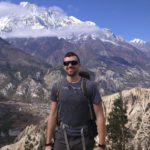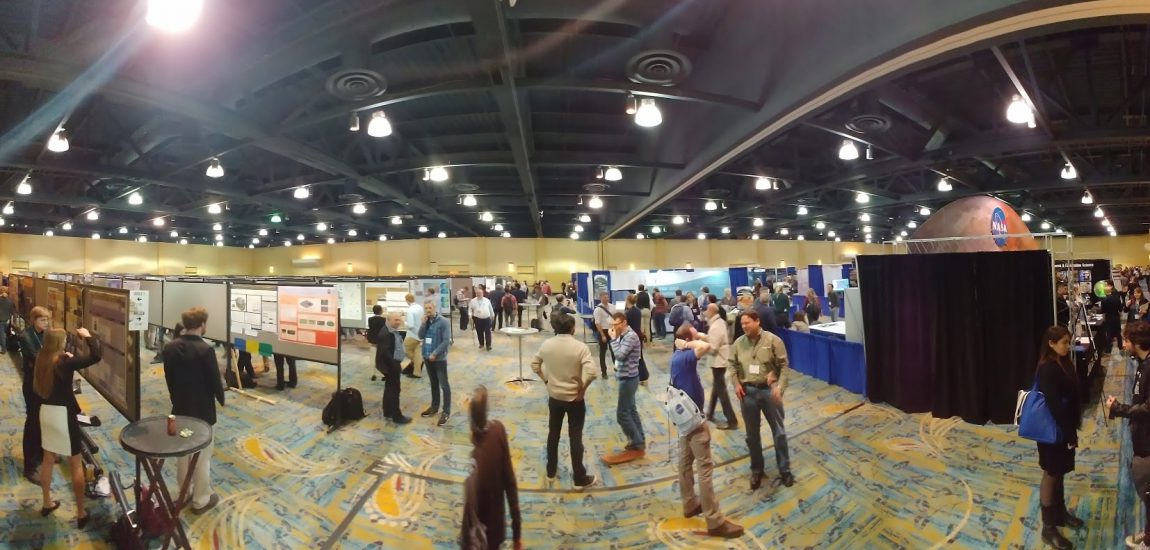
An EAG ambassador aims for the bullseye at the 49th LPSC
49th LPSC, 19th-23rd March 2018, The Woodlands, Texas, USA
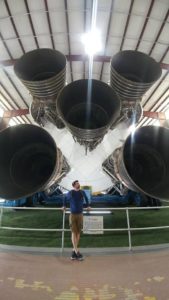
Attending my very first Lunar and Planetary Science Conference was an exciting prospect. As a planetary scientist whose background is in biology, it feels like a long and winding road that led me there. From the beginning of my PhD in astrobiology, I have felt drawn towards the exploration side of planetary science, and since then, especially during my current postdoc, I have been developing that interest consciously; pushing my work in the direction of mission-informing science. LPSC in the Woodlands, Texas, is the centre of the bullseye as far as new exciting mission science is concerned. So in order to meet and mingle with the people who might form the basis of my future career, I needed to get to LPSC.
Travelling to an international conference as a postdoc can be tricky, as budgets are limited and often there are fewer sources of funding than for students, so I am extremely grateful to EAG for providing matching funds and making the trip possible. Armed with two accepted abstracts (an oral and poster presentation), I hopped on a plane in Edinburgh and flew in to George Bush Intercontinental Airport in Houston, TX. Heading out a few days early meant I could tick off something from my bucket list- seeing the Saturn V rocket up close at Space Centre Houston (it’s a very big rocket!). Arriving at the conference venue we were treated to a generous spread of tasty food for the icebreaker event, and immediately I got the vibe of the meeting. The diverse mix of scientists from across the US, Europe and beyond were welcoming, supportive and as excited as I was to be in the company of other planetary scientists.
It was a privilege to speak about my work on microbial silicification during the Astrobiology session, one of my favourite sessions of the week, and I was surprised and honoured to have such a positive reaction to my talk. Check out the Planetary Society’s blog from the session, including a summary of my talk here. The poster session the following day was exhausting (as they often are!), but in a very rewarding way. I met some great people, put faces to names, and have come away with some new collaborations and a network of contacts in the US and at other locations around the world. I found many like-minded people who shared my interests in planetary analogue work and its role in the exploration of the solar system.
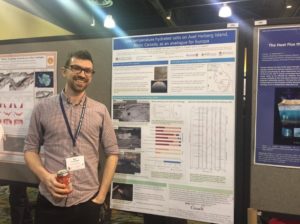
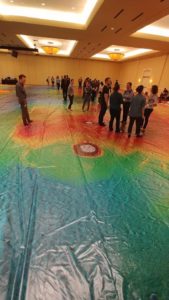
Throughout the week, the range of sessions was fascinating and the extra bits taking place both physically in the conference (such as a giant, room-sized topographic map of Mars that we could walk on) and digitally on social media (such as beautiful hand-drawn sketches of impact processing) really helped capture the unique vibe of the conference. I’ve not been to LPSC before, but have been reliably informed that the inclusive, fun atmosphere returns year after year. It was a great experience, both professionally and personally and would not have been possible without support from EAG. I hope to be back in 2019!
About the author
Mark Fox-Powell (@markfoxpowell) is a planetary scientist with a background in microbiology. His interests lie in maximising scientific return from upcoming or current planetary missions, particularly those that are exploring potential habitats for extraterrestrial life. His PhD at the University of Edinburgh investigated the geochemical constraints on habitability in simulated martian brines. Mark applies a range of geochemical, spectroscopic and microbiological techniques to answer questions central to the ongoing exploration of the solar system. As a Leverhulme-funded research fellow at the University of St Andrews, Mark is using a combined field and laboratory approach to investigate how signatures of microbial life might become delivered to and preserved on the surfaces of icy moons such as Europa and Enceladus, and how they might be detectable by spacecraft.
